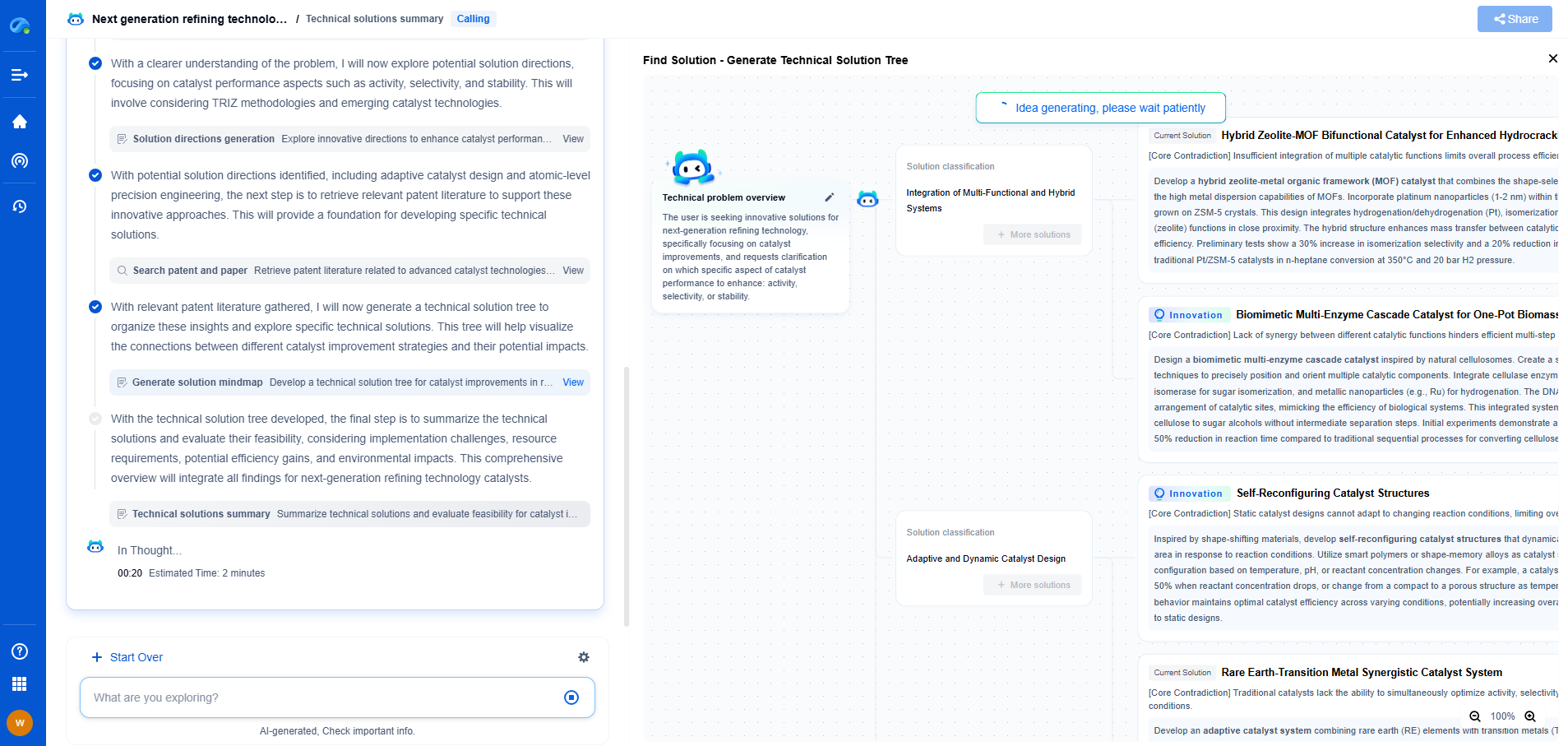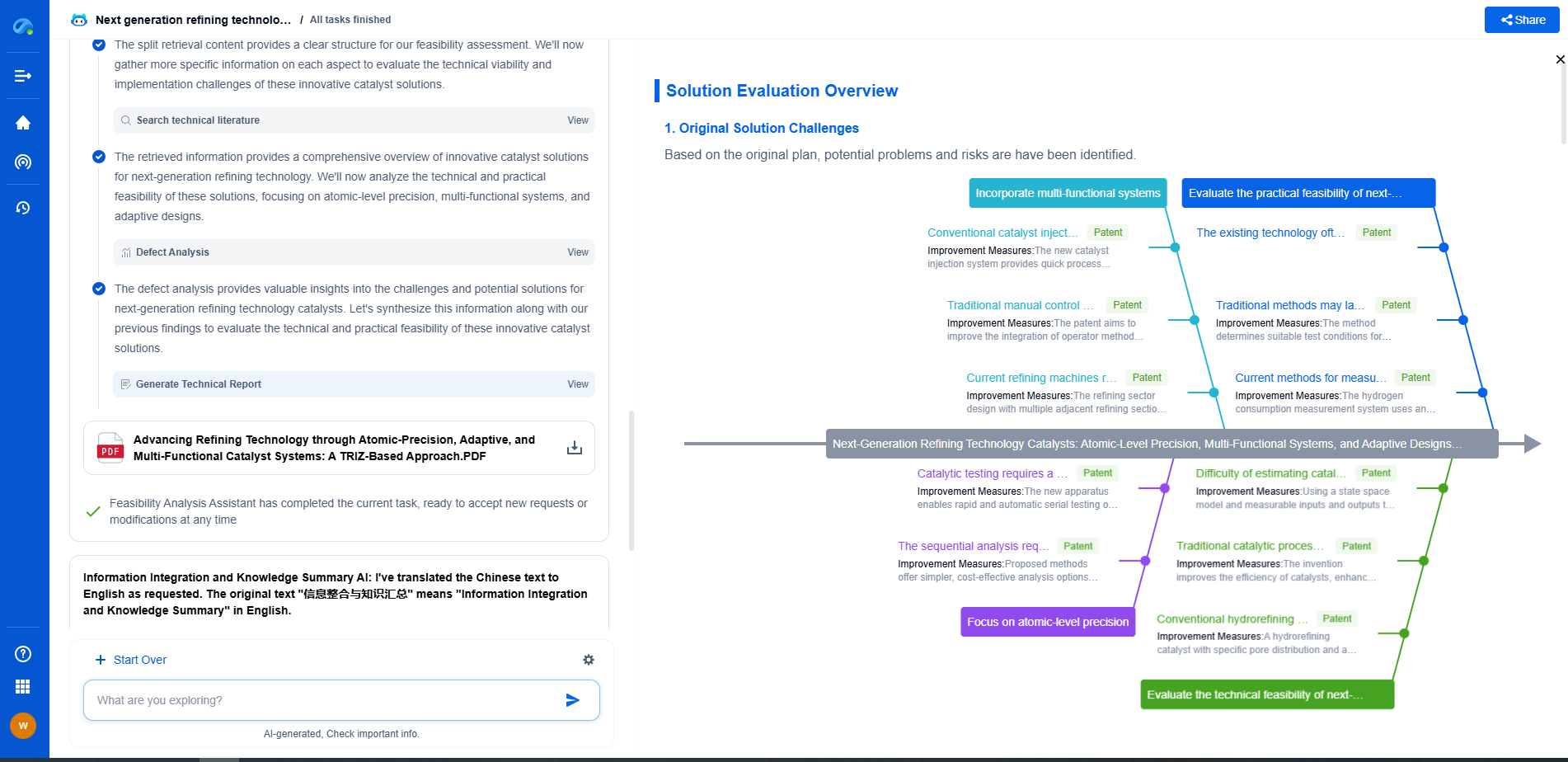How to Apply Anomaly Detection in HVAC and Energy Systems
JUL 2, 2025 |
Introduction to Anomaly Detection
Anomaly detection is a critical component in the efficient management of HVAC (Heating, Ventilation, and Air Conditioning) and energy systems. These systems are intricate and often subject to operational deviations that can significantly impact their performance and energy consumption. Anomalies, or deviations from expected patterns, can indicate potential failures, inefficiencies, or other issues that require prompt attention. Employing anomaly detection helps in predictive maintenance, enhances system reliability, and optimizes energy usage.
Understanding Anomalies in HVAC and Energy Systems
In the context of HVAC and energy systems, anomalies can manifest in various forms, such as unexpected temperature fluctuations, irregular energy consumption patterns, or equipment operating outside its normal parameters. Some anomalies may be benign, caused by temporary changes in usage patterns, while others could signal underlying issues such as equipment malfunction or incorrect system settings. Identifying these anomalies early is crucial to prevent potential damage and to ensure optimal performance.
Methods for Anomaly Detection
There are several methods and technologies available for detecting anomalies in HVAC and energy systems:
1. Statistical Methods: These involve establishing a baseline of normal operational data and identifying deviations from this baseline. Techniques such as control charts, regression analysis, and time-series analysis fall under this category.
2. Machine Learning: Machine learning models can be trained on historical data to recognize patterns and detect anomalies. These models, including supervised, unsupervised, and semi-supervised learning, can handle large datasets and complex patterns more effectively.
3. Rule-Based Systems: These systems use predefined rules and thresholds to identify anomalies. Although straightforward, they may not adapt well to changing conditions and may require frequent updates.
4. Hybrid Models: Combining statistical methods, machine learning, and rule-based approaches can provide a more robust anomaly detection framework, leveraging the strengths of each technique.
Implementing Anomaly Detection in HVAC and Energy Systems
The implementation of anomaly detection involves several key steps:
Data Collection: Gather data from sensors and control systems within the HVAC and energy systems. This data may include temperature readings, energy consumption logs, equipment status, and environmental conditions.
Preprocessing: Clean and preprocess the data to handle missing values, noise, and outliers. This step is crucial for ensuring the accuracy of the anomaly detection process.
Model Selection: Choose the appropriate anomaly detection model(s) based on the system's requirements and complexity. Consider factors such as the volume of data, the expected types of anomalies, and the available computational resources.
Training and Testing: Train the chosen model(s) using historical data and validate their performance with test datasets. Fine-tuning the models may be necessary to improve accuracy and reduce false positives or negatives.
Deployment and Monitoring: Deploy the anomaly detection system in a live setting and continuously monitor its performance. Adjust model parameters and update models as needed to maintain effectiveness.
Challenges in Anomaly Detection
Despite its advantages, anomaly detection in HVAC and energy systems poses several challenges:
Data Quality: Inaccurate or incomplete data can lead to incorrect anomaly detection results. Ensuring high-quality data through proper sensor maintenance and calibration is essential.
Adaptive Systems: HVAC and energy systems can change over time due to factors like equipment upgrades or changing environmental conditions. Anomaly detection models must be adaptable to these changes.
False Positives/Negatives: Striking a balance between sensitivity and specificity is crucial to minimize false positives and negatives. Excessive false alarms can lead to alert fatigue, while missed anomalies can cause undetected issues.
Conclusion
Anomaly detection is a powerful tool for enhancing the performance and reliability of HVAC and energy systems. By identifying irregularities early, facility managers can take proactive measures to address issues, optimize energy consumption, and extend equipment life. While challenges exist, advances in technology and data analytics continue to improve the effectiveness of anomaly detection systems, making them indispensable in modern energy management.
Ready to Reinvent How You Work on Control Systems?
Designing, analyzing, and optimizing control systems involves complex decision-making, from selecting the right sensor configurations to ensuring robust fault tolerance and interoperability. If you’re spending countless hours digging through documentation, standards, patents, or simulation results — it's time for a smarter way to work.
Patsnap Eureka is your intelligent AI Agent, purpose-built for R&D and IP professionals in high-tech industries. Whether you're developing next-gen motion controllers, debugging signal integrity issues, or navigating complex regulatory and patent landscapes in industrial automation, Eureka helps you cut through technical noise and surface the insights that matter—faster.
👉 Experience Patsnap Eureka today — Power up your Control Systems innovation with AI intelligence built for engineers and IP minds.
- R&D
- Intellectual Property
- Life Sciences
- Materials
- Tech Scout
- Unparalleled Data Quality
- Higher Quality Content
- 60% Fewer Hallucinations
Browse by: Latest US Patents, China's latest patents, Technical Efficacy Thesaurus, Application Domain, Technology Topic, Popular Technical Reports.
© 2025 PatSnap. All rights reserved.Legal|Privacy policy|Modern Slavery Act Transparency Statement|Sitemap|About US| Contact US: help@patsnap.com

